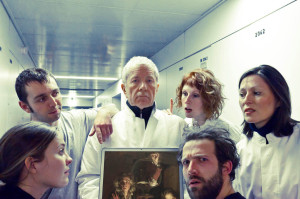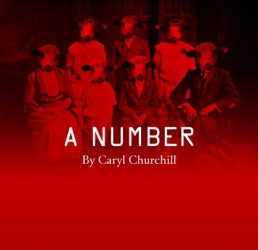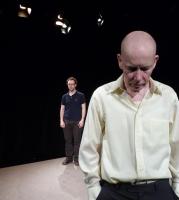by ANNA ZIEGLER
 A science play about a revolutionary discovery – and how the boys took over
A science play about a revolutionary discovery – and how the boys took over
In the early 1950s the young Jewish scientist Rosalind Franklin had to struggle with a frustratingly male-dominated science establishment at King´s College in London. Some of her colleagues even refused to acknowledge her doctoral title, while access to the faculty club, which was reserved to men, remained denied to her.
After months of work, she succeeded in taking the X-ray photograph that became the turning point for elucidating the DNA double helical structure: photograph 51. However, the credit for this revolutionary scientific discovery was given to the men who used the picture without her knowledge; Franklin´s crucial contribution went unacknowledged for decades.
When James Watson, Francis Crick and Franklin´s colleague Maurice Wilkins received the Nobel prize in 1962, she had been dead for four years.
In a nutshell, Anna Ziegler‘s play shows the making of an outstanding scientific discovery in a bone-dry, ritualized and women-excluding male establishment, in which an emotional minefield, social coldness and hierarchies, antisemitism and ferocious fighting for recognition and scientific priority went hand-in-hand with scientific curiosity, meticulousness and juvenile enthusiasm. (in 1952, James Watson was just 24 years old, Rosalind Franklin was 32 !).
Photograph 51 was the third production in our Science & Theatre program.
Supported by 
![]()
Image: Magnus Hengge / Photos: Christian Jungeblodt
 A social drama, a science play, a thriller
A social drama, a science play, a thriller “Walk round the corner and see yourself you could get a heart attack. Because if that´s me over there who am I?”
“Walk round the corner and see yourself you could get a heart attack. Because if that´s me over there who am I?” Caryl Churchill’s compelling thought-experiment has a single, simple premise: humans have been cloned. In one hour of ferociously intense tragicomedy, she digs down to the roots of personal identity, exposing the hard but brittle bond between fathers and sons and the ultimate cost of evasion. The past can be buried, but it won’t stay down.
Caryl Churchill’s compelling thought-experiment has a single, simple premise: humans have been cloned. In one hour of ferociously intense tragicomedy, she digs down to the roots of personal identity, exposing the hard but brittle bond between fathers and sons and the ultimate cost of evasion. The past can be buried, but it won’t stay down.